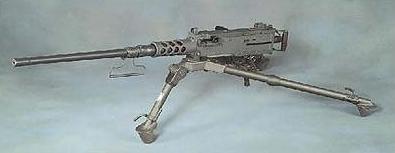
Despite how famous the M1911 has become, its service life began modestly. On April 24, 1911, the Army placed an initial order with Colt for 31,344 pistols. By early 1917, more than 100,000 had been manufactured both by Colt and by Springfield Armory under a licensing agreement. Most of these were issued to commissioned and noncommissioned officers, cavalrymen, and members of machine gun, artillery, and other crew-served weapons units. In addtion, about 18,000 were procured by the Navy and Marine Corps. Thousands more were purchased by various foreign governments, while others were sold to U.S. military officers and government officials, or on commercial markets. Among the M1911s sold during the prewar years were a group of approximately 100 pistols purchased through Springfield Armory by National Rifle Association (NRA) Life Members and members of NRA-affiliated clubs. Both Colt- and Springfield Armory-produced examples were included in this program. These pistols carried a purchase price of $16 each and were stamped with the letters "NRA" on the right side of the frame below the serial number.

Production is still undertaken in Belgium, the United Kingdom and the US; in all three countries the output is primarily for export. The demand does not appear to be slacking.
On the Browning 0.50 M2 HB the operating cycle begins when the firing pin strikes the cap and fires the cartridge. At this point the bolt is locked to the barrel/barrel extension assembly by the breech lock, a lug which is held up into a slot in the bolt by the locking cam fitted at the bottom of the reciever.
After the cartridge fires, the reaction to the explosion drives the moving parts to the rear. After approximately 20mm of recoil the breech lock pin strikes the breech lock depressors, which push the pin and breech lock lug downward, out of engagement with the bolt. The bolt is thus unlocked, separates from the barrel/barrel extension, and travels to the rear. The barrel and barrel extension are completely halted by the barrel buffer body.
During rearward travel the barrel and extension assembly comes into contact with the accelerator pin. The contact point between the barrel extension and the accelerator moves downward progressively while the barrel extension slides backwards. This downward movement changes the ratio of leverage exerted by the tip of the accelerator against the bolt, so that the bolt is thrown backwards at an increased speed relative to the other recoiling parts. In addition, the gradual transfer of energy from the barrel extension to the bolt, via the accelerator, also damps the shock given by the barrel extension against the barrel buffer. A further advantage accuring from the accelerator is that the increase in bolt speed assists in extracting the spent case from the chamber in a progressive manner.
The rearward travel of the bolt comptesses the return spring and is finally halted when the bolt strikes the buffer plate. The buffer plate discs absorb the shock and, rebounding, start the bolt forward once more, this movement being contuinued by the energy stored in the return spring. The lower edge of the bolt strikes the tip of the accelerator, turns it forward, and unlocks the barrel and barrel extension assembly from the barrel buffer, whereupon the barrel buffer spring drives the barrel and barrel extension assembly forward. This forwad motion is augmented by that of the bolt and its driving spring as the bolt reaches its foremost position in the barrel extension.
At the end of the forward movement the breech lock lug, driven by the barrel extension, rides up the inclined plane of the breech lock cam and enters the recess in the bottom of the bolt, thereby locking the bolt to the barrel/barrel extension assembly.
During the recoil of the bolt the spent case in the breech is withdrawn by the T-slot in the face of the bolt. At the same time, a fresh cartridge is pulled from the belt by the extractor-ejector. The extractor is gradually forced down by the cover extractor cam until the fresh cartridge is located on th ebarrel axis. This downward movement also forces out the spent case which is then ejected downwards. As the bolt returns, so the fresh cartridge is inserted into the chamber.
Also during the recoil movement of the bolt, the belt feed lever engages in a diagonal groove in the top of the bolt and is pivoted as a result of the bolt's movement. This forces the belt feed slide to move to the left in the slot in the feed cover. The belt feed pawl engages behind the next cartridge. As the bolt moves forward the belt feed lever is pivoted in the reverse direction and the belt feed slide moves to the right, ready to begin the next feed.
The cartridge headspace is critical on the standard M2 HB. Ideally, it should be adjusted by means of "go/no go" gauges, but in default of the correct guages an approximation may be achieved by screwing the barrel in fully, then unscrewing it two clicks. Should the gun fire sluggish, the barrel should be unscrewed by one further click.
In 2RCR, the .50 cal HMG is the main gun used on most of our tracked APCs, sharing main armament duty with the C6 GPMG. It is as well used in the dismounted role using a tripod. With the versatility of the weapon, the 50 cal will stay within the CF for years to come.